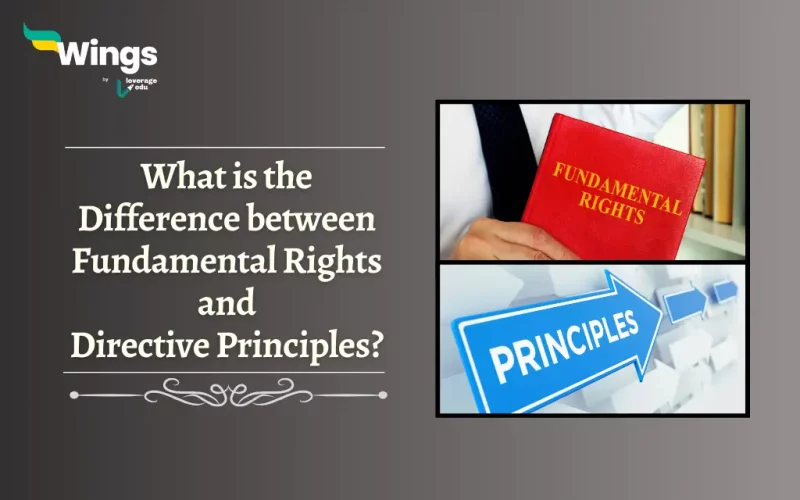The Indian Constitution mentions the Directive Principles of State Policy in Part IV Article 35 to Article 51. Additionally, they aim to guide the Government on the social and economic welfare of the Indian citizens. On the other hand, the Constitution mentions Fundamental Rights in Part III Article 12 to Article 35. They include all the rights of an Indian citizen irrespective of any social discriminating factor. Consequently, this blog will tabularise the difference between Fundamental Rights and Directive Principles of State Policy.
Difference between Fundamental Rights and Directive Principles of State Policy
Furthermore, here is a table that maps out the difference between both:
| Difference Between Fundamental Rights and Directive Principles of State Policy | ||
| Feature | Fundamental Rights | Directive Principles of State Policy |
| Definition | It guarantees rights to citizens by the Indian Constitution and secures basic freedoms and liberties. | Moreover, Principles outline the ideals and objectives the Government should strive towards. |
| Included in Part | Part III of the Indian Constitution. | Part IV of the Indian Constitution. |
| Article/s | Article 12 to Article 35. | Article 35 to Article 51. |
| Borrowed from | The U.S. Constitution’s Bill of Rights. | The Irish Constitution. |
| Enforceability | Enforceable by law. Additionally, Citizens can approach Courts if their Fundamental Rights are violated. | Non-justiciable. Moreover, they cannot be directly enforceable by courts. |
| Legal Rights | Constitutional rights- they cannot be overridden by any law. | Guidelines- Laws can be enacted that contradict them. |
| Nature | Moreover, there is a guarantee of Basic human rights by the Constitution. | Goals and ideals for the Government. |
| State Obligation | State must not violate these rights. | State should strive to achieve these principles. |
| Suspension | Suspension during Emergencies (except Article 20– Protection in respect of conviction for offences and Article 21– Protection of life and personal liberty) | Furthermore, no suspension under any circumstances. |
| Focus | Focuses on individual rights and freedoms. | Focuses on the social and economic welfare of the citizens. |
| Amendment | Can be amended following the procedure outlined in Article 368 of the Constitution. However, the amendment must keep the Basic Structure of the Constitution the same. | Moreover, amendments are possible. |
| Restrictions | Subject to reasonable restrictions for public interest. | Subject to the resources available to the State. |
| Examples | Right to Equality Right against Exploitation Right to Constitutional Remedies, etc. | Uniform civil code Securing a living wage for workers Free and compulsory education for children |
Related Blogs
| The Important Acts in India | Functions and Responsibilities of State |
| What is Universal Adult Franchise? | Representation of People’s Act |
Lastly, we hope you liked our blog and gained an understanding of the Difference Between Fundamental Rights and Directive Principles of State Policy. Moreover, you may even read more blogs and empower yourself with knowledge regarding Civics and Polity!
 One app for all your study abroad needs
One app for all your study abroad needs













